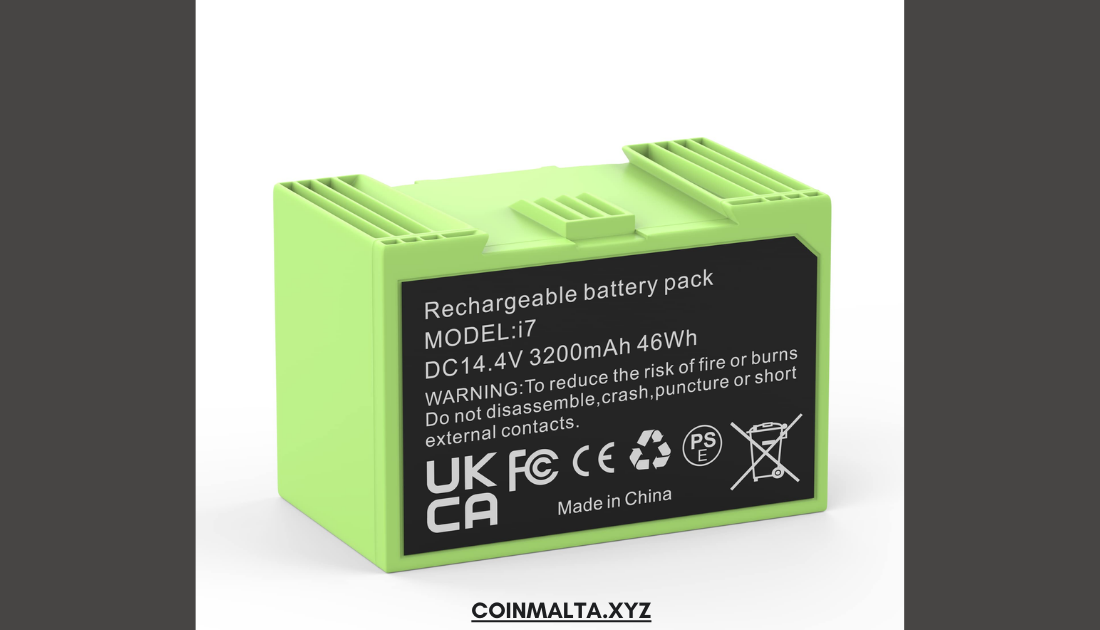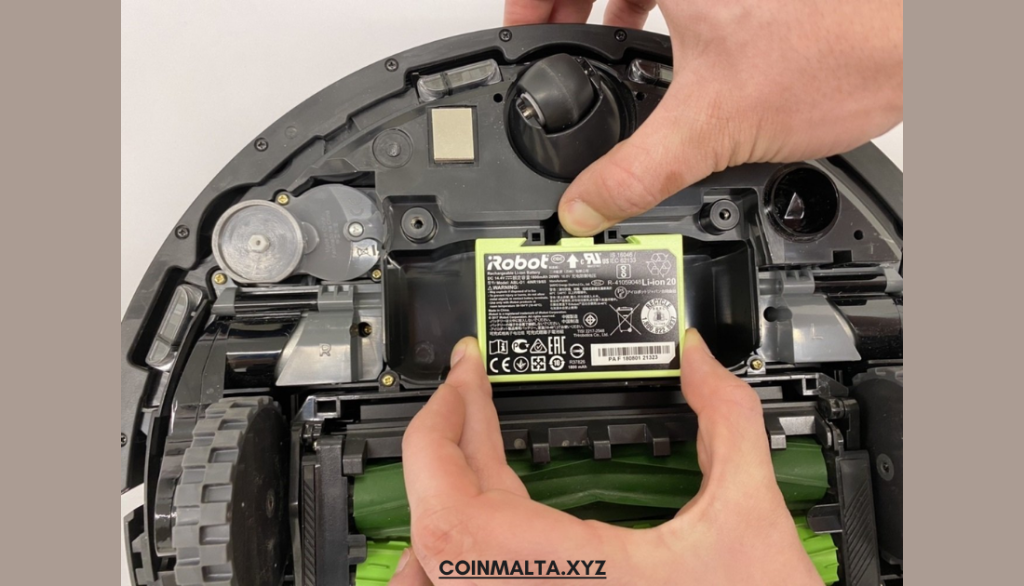Blog
Roomba i7 Battery Life: What to Expect and How to Maximize Performance
The iRobot Roomba i7 has quickly become one of the most popular robotic vacuums for its smart technology, powerful suction, and convenient cleaning abilities. A key feature for any robotic vacuum, however, is its battery life. Understanding how long the Roomba i7 can operate on a single charge and how to extend its battery life is essential to getting the most out of your device. In this article, we’ll dive into the Roomba i7 battery life, what affects it, and tips on maximizing its performance for a cleaner home.
What to Expect from the Roomba i7 Battery Life
The Roomba i7 is equipped with a lithium-ion battery that provides reliable power and longevity. On a single charge, the Roomba i7 can run for up to 75 minutes. This runtime is sufficient for most average-sized homes, allowing the vacuum to clean multiple rooms before needing to recharge. Once it completes its cycle or detects a low battery, the Roomba i7 automatically returns to its docking station to recharge.
For larger homes, the Roomba i7 has a convenient “Recharge and Resume” feature. If the battery runs low mid-clean, it will return to the dock, recharge, and resume cleaning where it left off. This feature ensures comprehensive cleaning without interruptions, even in bigger spaces.
While 75 minutes may seem short compared to other models with extended battery life, the Roomba i7’s efficiency and smart mapping features make it highly effective within that timeframe. However, there are ways to optimize and even extend its battery life, allowing it to cover more ground efficiently.
Factors That Affect Roomba i7 Battery Life
Several factors influence the Roomba i7’s battery life. Being aware of these factors can help you maximize the runtime and performance of your Roomba i7.
1. Cleaning Mode
The Roomba i7 offers different cleaning modes that impact its battery life. For example, “Spot Cleaning” mode, which focuses on one specific area, uses more power in a concentrated spot. Conversely, the “Auto” mode, which allows the robot to navigate rooms efficiently, can help conserve battery life by following an optimized cleaning path.
The intensity of suction also plays a role. Higher suction settings are ideal for carpets or areas with more debris, but they consume more battery power. Using standard settings in low-traffic areas can help prolong battery life without sacrificing cleaning effectiveness.
2. Floor Type
The type of flooring the Roomba i7 cleans also affects its battery consumption. For instance, hardwood and tile floors are easier for the Roomba to navigate, requiring less power to move and clean efficiently. Carpets, however, require more suction and power, which can decrease battery life.
If your home has a mix of flooring, you may notice that battery life varies depending on the areas cleaned. Homes with more carpeted surfaces might experience shorter cleaning times per charge due to the extra energy needed for thorough suction.
3. Room Size and Layout
The layout and size of your home significantly impact how long the Roomba i7 can clean on a single charge. Larger homes or homes with complex layouts require more time to navigate and clean completely. Additionally, homes with multiple rooms, narrow hallways, or furniture obstacles will make the Roomba work harder to map and maneuver around objects, slightly affecting battery usage.
To improve efficiency, consider removing unnecessary obstacles and keeping floors tidy. This reduces the time your Roomba spends navigating around objects and conserves battery life for cleaning tasks.
4. Frequency of Cleaning
The frequency at which you use your Roomba i7 can also influence the overall longevity of the battery. Daily cleanings require the battery to undergo more charge cycles, which over time can reduce its capacity. While the Roomba i7 is built to handle frequent use, you might consider cleaning every other day if you live in a low-traffic area or your floors stay relatively clean.

Tips to Maximize Roomba i7 Battery Life
Maximizing the battery life of your Roomba i7 can ensure efficient, uninterrupted cleaning and extend the lifespan of the battery. Here are some helpful tips to keep your Roomba running at its best:
1. Keep the Charging Contacts Clean
The charging contacts on both the Roomba and its dock can accumulate dust over time, which may affect the charging process. To ensure your Roomba i7 charges efficiently, clean the contacts regularly with a soft, dry cloth. This simple maintenance step ensures a strong connection, helping the battery charge effectively and providing longer battery life.
2. Use an Efficient Cleaning Schedule
Setting a consistent cleaning schedule can help optimize battery usage. Instead of frequent spot cleaning or random sessions, establish a routine that allows the Roomba to clean all necessary areas in one go. Using the Roomba i7’s app, you can create a schedule that aligns with your daily routine, ensuring the vacuum only runs when needed and avoids excessive charging cycles.
3. Optimize Floor Plan Mapping
The Roomba i7’s smart mapping feature learns your home’s layout over time, allowing it to clean efficiently without wasting battery power. To take advantage of this feature, enable mapping during the initial cleaning sessions. Once your Roomba has mapped your home, it can avoid unnecessary overlaps and optimize its cleaning path, resulting in improved battery performance and more thorough cleaning.
4. Store and Charge Properly
Properly storing and charging your Roomba i7 is crucial for battery health. Always keep the vacuum docked on the charging station when not in use, as this helps maintain a healthy battery. Additionally, avoid storing the Roomba in extreme temperatures, as high heat or cold can negatively affect lithium-ion battery performance and longevity.
If you need to store your Roomba i7 for an extended period, fully charge the battery before turning it off. Recharge it every few weeks to keep the battery in good condition.
5. Keep Your Roomba Clean
Regular maintenance not only helps your Roomba perform better but also extends its battery life. Clean the brushes, wheels, and filters regularly to prevent blockages and improve airflow. A Roomba with clean brushes and filters requires less power to operate, helping to conserve battery life during each cleaning session.
How Long Does the Roomba i7 Battery Last?
On average, the Roomba i7’s lithium-ion battery lasts between 18 months to 2 years, depending on usage frequency and maintenance habits. Heavy daily use may lead to shorter battery life, while moderate, well-maintained use can extend it. Fortunately, the Roomba i7’s battery is replaceable, so you can easily swap in a new battery when needed, keeping your Roomba running efficiently.
Replacing the battery is straightforward and can be done with minimal tools, allowing users to maintain the vacuum’s performance for years. Keeping up with regular maintenance and following the tips outlined above can also help you maximize the lifespan of the battery.
Signs That It’s Time to Replace the Battery
While the Roomba i7 battery is built to last, all batteries eventually need replacement. Here are some signs that it may be time to replace your Roomba i7 battery:
- Shortened Run Time: If your Roomba isn’t lasting as long as it used to on a full charge, it may indicate battery wear.
- Difficulty Holding a Charge: If the Roomba frequently returns to the dock without completing a cleaning cycle, the battery might be losing its capacity.
- Erratic Behavior: The Roomba might shut off unexpectedly during a cleaning cycle or have difficulty charging.
If you notice these signs, consider replacing the battery to ensure optimal performance.
Conclusion: Get the Most Out of Your Roomba i7 Battery Life
The Roomba i7 offers a powerful, efficient cleaning experience with a reliable 75-minute battery life, which is usually sufficient for most homes. However, several factors can affect this battery life, from floor type to cleaning mode. By understanding these factors and implementing maintenance tips, you can optimize the battery life and ensure your Roomba i7 runs smoothly.
From maintaining clean charging contacts to creating an efficient cleaning schedule, taking care of your Roomba’s battery can enhance its performance and longevity. With proper care and regular maintenance, you’ll enjoy an extended battery life that keeps your home cleaner with less effort. Embrace the convenience of the Roomba i7 and maximize its battery potential for a stress-free, always-clean home.

